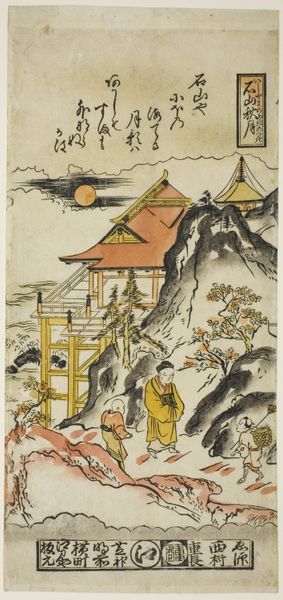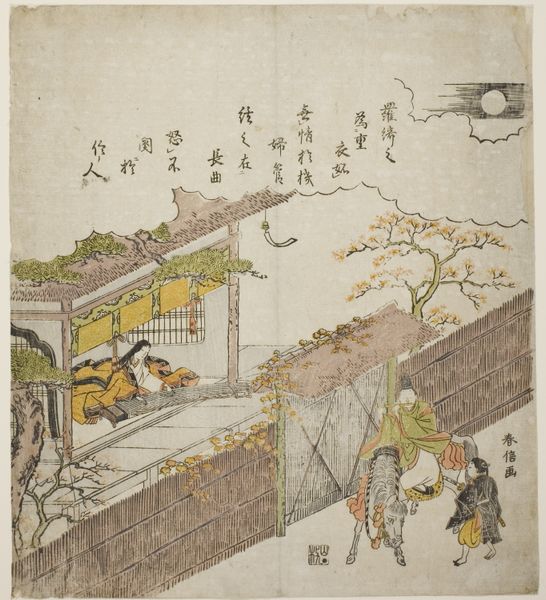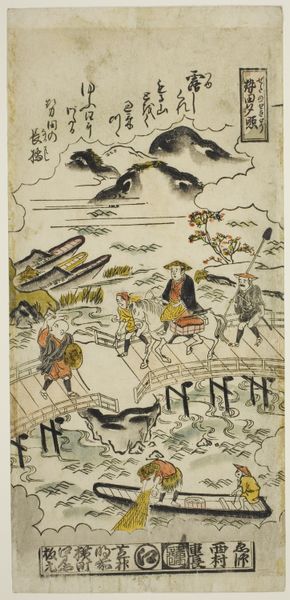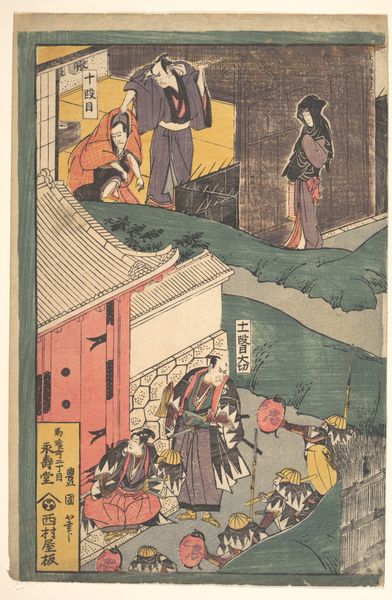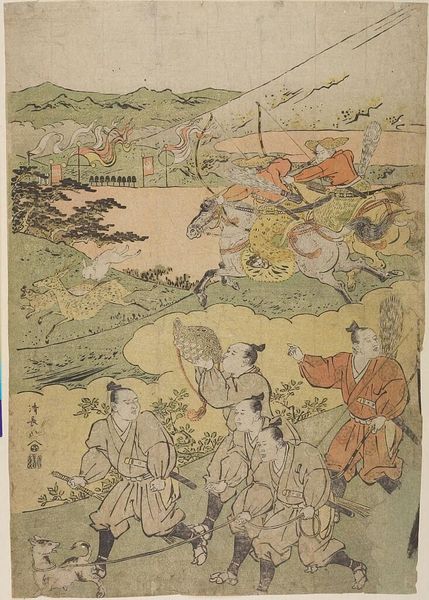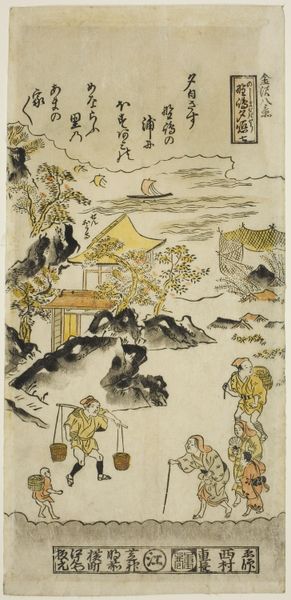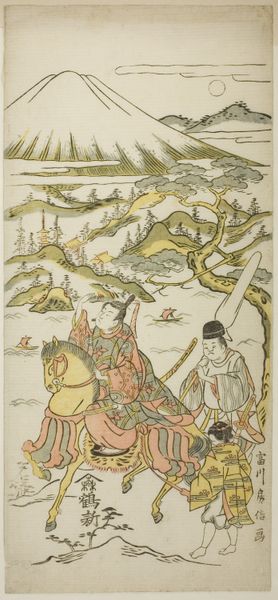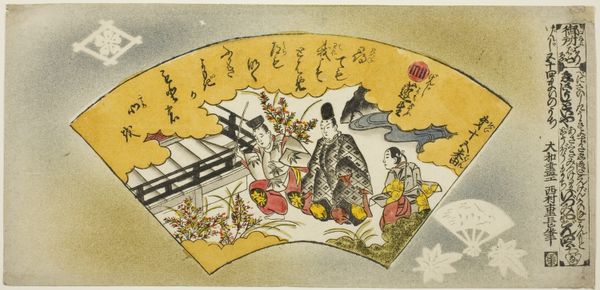
Descending Geese at Katada (Katada no rakugan), No. 7 from the series "Eight Views of Omi" c. 1716 - 1736
0:00
0:00
print, woodblock-print
# print
#
asian-art
#
landscape
#
ukiyo-e
#
woodblock-print
Dimensions: 13 1/2 × 6 1/4 in.
Copyright: Public Domain
Editor: This is *Descending Geese at Katada, No. 7 from the series "Eight Views of Omi,"* a woodblock print by Nishimura Shigenaga from around 1716-1736. Looking at this work, I’m immediately drawn to how it depicts daily life. What's particularly interesting about how this was made and why? Curator: Precisely. It's fascinating to consider the production of these prints. We should remember Ukiyo-e wasn't just the artist's vision; it involved the collaborative labour of woodblock carvers and printers, working for a publisher driven by market demand. This series, for example, speaks to a rising interest in leisure and travel among the merchant classes. Editor: So, the demand for images reflecting popular pastimes influenced the art's creation itself. I guess, who was buying and consuming these determined what was being produced. Curator: Exactly. The very materials, the woodblocks and pigments, became commodities themselves. Imagine the lifecycle: a tree is felled, processed into a printing block, used to create countless images, reflecting views people aspired to visit, until the block is exhausted, and then discarded. Editor: I hadn't really thought about that before; all that physical labour for art consumed for a time and then possibly just thrown away. It reframes how I understand the work’s value, it’s less about the individual artist's genius, more a material document of production and consumption at this specific time in history. Curator: And isn't that a richer, more nuanced understanding? This print is then evidence of trade routes, pigment production, labour conditions. What this artwork communicates stems from a whole social apparatus, not just individual skill. Editor: Definitely! I now appreciate seeing these images less as isolated aesthetic objects and more as records of the complex systems that brought them into existence. It adds a layer of real depth. Curator: Precisely, we are studying material remains, a picture is also a source that helps us understand better social reality, material culture, and productive forces.
Comments
No comments
Be the first to comment and join the conversation on the ultimate creative platform.


